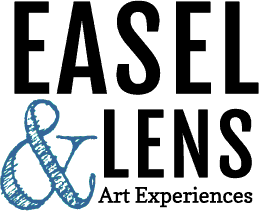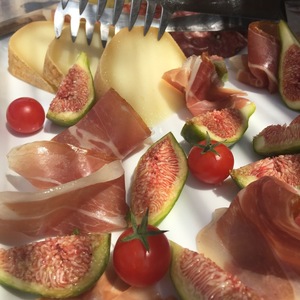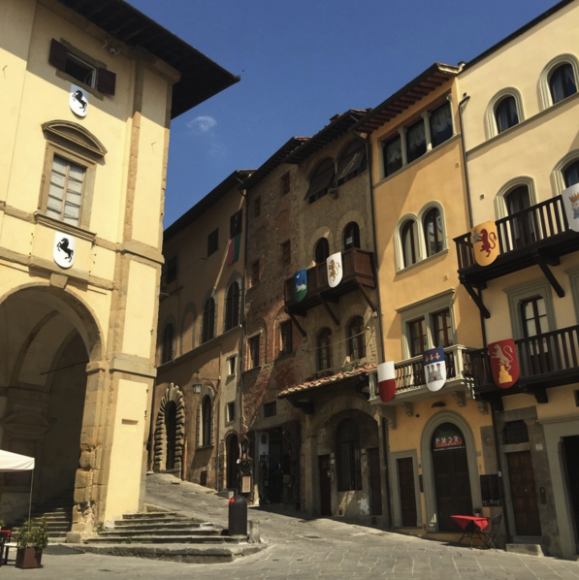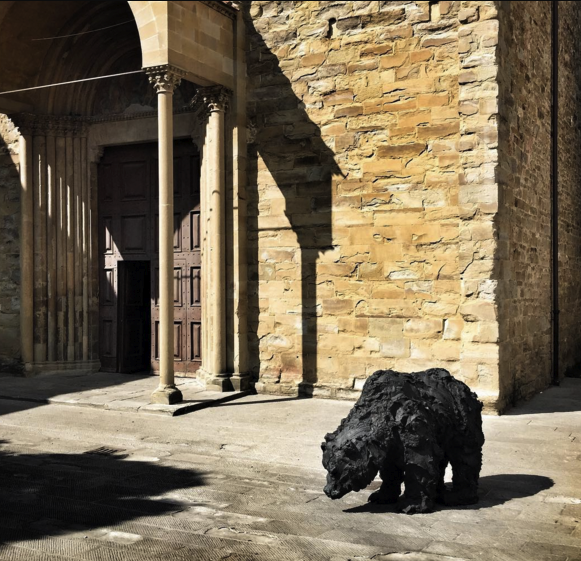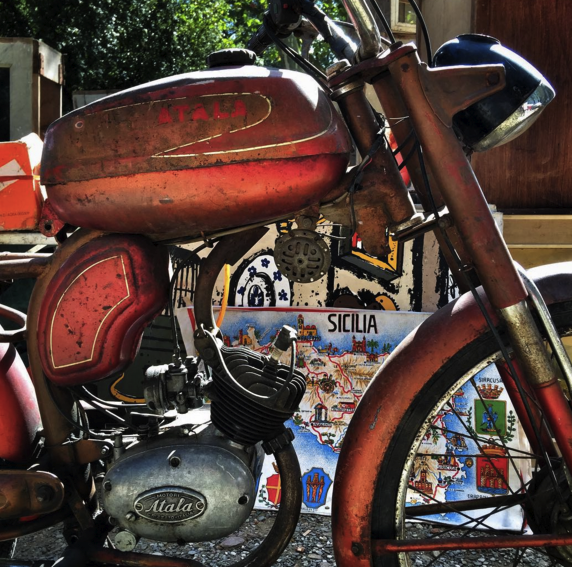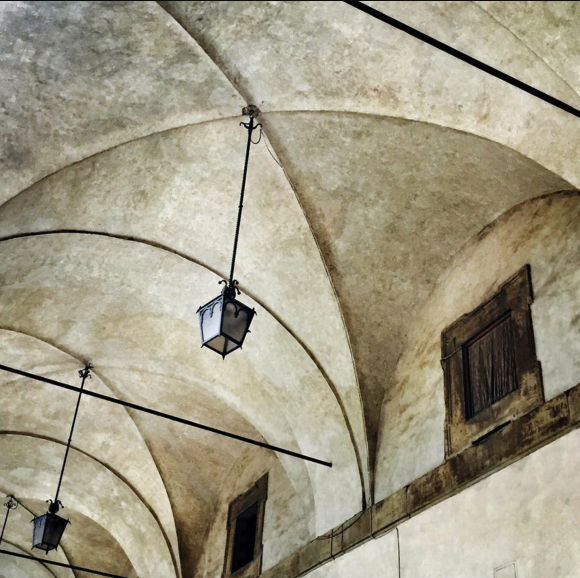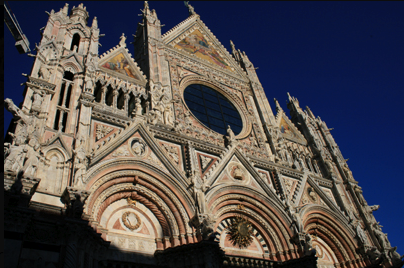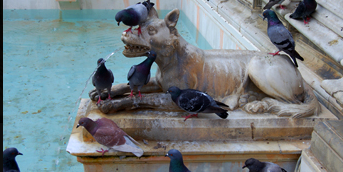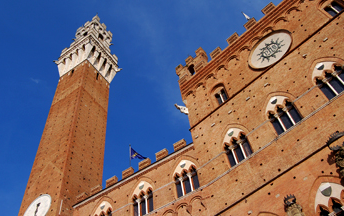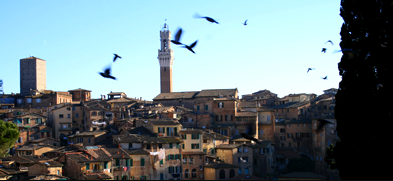ABOUT ARTIST IN ITALY
Set in the beautiful and inspiring Tuscan and Umbrian countryside, ARTIST IN ITALY has been running painting and photography holidays since 2009 for people who love art, Italy, good food and wine, just as we do. Our courses are carefully designed for complete beginners with no previous experience, intermediate artists who would like to improve their skills and techniques, and practicing artists looking for a new challenge. We also offer a variety of custom-made art courses in order to build confidence and inspire you across a range of themes and disciplines. These unique courses also reflect the culture and history of the area where we live, and are interwoven with art-history excursions, providing inspiration, variety and interest throughout the week. Above all, this is a real opportunity for developing artists to work in small groups alongside a teacher with over 25 years of experience.
THE HOUSE
The house, called Siliano Alto, stands solid and square on its own small hill ringed with trees; olives, walnuts, and stately pines. Behind it a verdant wood, and all around golden, rolling fields and distant mountains. The estate, called "Le Coste" (meaning the border) is a hillside paradise for nature and peace. This wonderful setting gives you a rare opportunity to explore a stunning wooded and pastoral landscape, home to a wide variety of birds and animals including deer, porcupine and, more than the occasional, wild boar. White roads and tracks criss-cross this ancient estate giving you the chance to walk or cycle and breath the air of a natural reserve, surrounded by beautiful hundred-year-old pines, cypress trees and extraordinary views across the valleys of Tuscany and Umbria. 
If that isn’t tempting enough there are also 3 beautiful swimming pools and 2 tennis courts to help you relax after a hard day at the easels. Wander through a hillside olive grove, walk between the shadows cast by majestic umbrella pines and cypress trees or simply be inspired by the landscape. Enjoy a glass of cold Prosecco or the sublime Brunello di Montalcino on one of our terraces whilst watching the sun set over the beautiful Tuscan town of Chiusi and the distant Montepulciano. In this environment you will paint and draw under the same mellow light that inspired the great Renaissance artists. 
The guest house is now the restored cantinas and stables on the ground floor of the house. It has been no small feat to turn them into 4 beautifully proportioned rooms; a single, two lovely doubles/twins and a large, light and airy bedroom which can comfortably sleep 3. Together they form part of our two apartments, each of which also has a sitting room/dining room and a covered outside terrace, one facing the sunrise and the other the sunset. 
THE STUDIO
A large, well-lit and beautifully designed artists’ studio, formerly the stables, has being carefully restored to provide all you could need during your stay. There is a large open work area with free-standing easels and an enormous 14 foot long chestnut table I also provide simple print-making facilities and an opportunity to work from digital photographs on a Mac.  
The studio opens onto terraces either side with beautiful views over the surrounding countryside, from where you can comfortably sit and paint. There is always a warm and friendly atmosphere in my studio and meals are often enjoyed there as a group.
FOOD & WINE
The food is simple, delicious and Italian, using fresh ingredients from the local market in Chiusi, much of which is organically grown; pumpkin risotto, pasta al forno, slow roasted fennel with red onions, salads with wild rocket, prosciutto and fresh figs… We enjoy good local wine, from the vineyards between Chiusi and the famous wine region of Montepulciano. This type of wine is called 'vino sfuso' or 'loose wine', and is natural and free of chemicals. Breakfasts, lunches and dinners are enjoyed together as a group. The course fee includes all the food and wine with each of your meals enjoyed at the house. Some lunches are served outside on one of the terraces, and we also enjoy at least one lunch out and dinner together at a great local Tuscan trattoria towards the end of each week.
THE AREA
We are situated just on the border of Tuscany and Umbria in central Italy near the hilltop town of Chiusi. It's an ideal location to explore the various villages and important Etruscan history in the immediate area, as well as quick drives to Florence and Rome - both equal distance from us. Other towns are nearby such as Arezzo, Castiglione del Lago on the shores of Lake Trasimeno, and Siena.
CHIUSI
It is the small Tuscan hill top town of Chiusi that greets me every morning, standing brave and fair above the terraced countryside. We face each other, through the changing seasons and shifts of light across a fertile valley. Chiusi’s mysterious origins date back to the 6th century before Christ, when Chiusi was one of the 12 most important cities in the Etruscan Federation. The town itself rises up from it’s legacy, a warren of underground subways, tombs and passages. Towards the end of WWII it was these secret hiding places that sheltered locals and escaped prisoners of war until they were led, blinking and terrified, out into the sunshine by the American forward reconnaissance of 1944.
The solid bell tower and the Duomo, San Secondiano, one of the earliest churches in Italy are further evidence of Chiusi’s ancient past, built almost entirely of borrowed and stolen Etruscan and Roman fragments. With a wonderful waste-not-want-not mentality, Roman columns have been cut and braced alongside carved Etruscan stones turned on their sides or upside down, perhaps purposely to ward of the pagan spirits. The Duomo, in it’s quiet piazza, suffused in golden light is a worthwhile visit with it’s mock Byzantine mosaics (amazing decorative paint work circa 1915) and it’s underground secrets.
If you are an Etruscan enthusiast (and even if you’re not) the Museo Archeologico Nazionale has a subtle lure. It’s a rather informal jumble of Etruscan atefacts, in which urns and beautifully carved and painted sarcophagi jostle for attention. The museum's dapper curator gives an animated tour of the museum, which includes the nearby tombs at Lago di Chiusi. What really strikes me about Chiusi is the superbly clashing juxtaposition of architectural styles. The severe 1920’s Teatro Communale with it’s fading stucco and the curving glass of a Deco-style Galleria besides the turn of the century fake Roman columns of the Museo. They are somehow all in perfect union with the soft aged stone of the Duomo and it’s tower in the lovely piazza.
Chiusi is a very ‘real’ Italian town, set in the landscape of pure Tuscany. Opposite the Museo there is a little gravelled park with a fountain and a kiosk selling caffe, the local old boys sit at the iron tables playing cards and ladies chat in the shade. In the rosy light of evening children rush about playing football in the square, using the ancient Cathedral columns as goalposts. This is one of my favourite places to come for an aperitivo or after dinner gelato. I usually walk the length of via Porsenna (the main street), maybe stopping at the butcher’s to pick up tomorrow’s dinner or chatting to the lady in the forno, but my real destination is always Café Venezia, with it’s luscious handmade cold stuff.
You won’t go hungry in Chiusi as there are several good restaurants; from pizzas at Osteria Etrusca to a wonderful Tuscan feast at the delectable La Solita Zuppa. Eating in this trattoria is a real experience, the theatrical owners glide between the tables like culinary ice dancers producing dish after dish of exquisite Tuscan food. They are passionate about their menu and it’s best to go with the flow and enjoy the floorshow. As the night deepens and the ghosts of the Etruscans flit about like fireflies Chiusi is acomforting sight in the landscape, lit by the moon and a circlet of pearly lights, strung around her weathered walls.
The lower town of Chiusi Scalo suffered much bombing during WWII, in an effort to obliterate the railway lines which then, as now, where a major transport hub opening up the whole of Italy. With routes to Naples in the south via Rome and out to Siena, Orvieto, Arezzo, Cortona, Montepulciano and northwards to Milan. It is a testament to the bravery of these towns and their inhabitants that, despite heavy attack from both the allies and later retreating German forces, the lines were kept running for the duration of the war. During the final months of mayhem as the liberating allies forged through central Italy there was intense fighting for the control of Chiusi and it is a miracle that so much of the old Tuscan town survived. Today, Chiusi Scalo is a busy modern town which great transport links, a lively local market and good food shopping.
AREZZO
Arezzo is such a classy town, it was recently voted one of the best places to live in Italy (by Italians) and I can see why. Despite being full of Renaissance goodies it still manages to be alive and hip and trendy. Host to the famous, monthly Fiera Antiquaria, Arezzo is a fine place to spend some time. There is a ‘wealthy’ feel to Arezzo, perhaps because of the glut of jewellers and goldsmiths who boost the town’s economy. The brisk lower town is thriving, full of ‘A-list’ shops and cool, glamorous pharmacies. But the real draw here is the splendid old quarter at the top of the hill.
Stroll up the pedestrianised Corso Italia, with its tempting bars and pasticcerias. Linger in the wonderful delis selling regional produce and let the earthy aroma of ripening cheeses and salamis envelop you. I love to stop and inhale outside Pane e Salute, a hundred year old bakery selling loaves studded with rosemary and olives and crusted in sea salt. Little tender rolls filled with molten formaggio and sweet leavened breads, fragrant with vanilla. I don’t think I’ve ever made it past without making a purchase. This street itself is stunning as if winds up towards the Piazza Grande, a montage of Renaissance and Romanesque architecture in the mellow hues of old stone, brick and crumbling stucco. There are some bijou little shops and boutiques amongst the plethora of antique dealers, but the real treasure of Arezzo is set to the left on via Cavour. The unassuming basilica of San Francisco houses perhaps the most magnificent of all the Renaissance fresco cycles, the glorious and epic ‘Legend of the True Cross’ by Piero della Francesca.
Other highlights here are; the church of San Domenico, whose cool, dark interior seems illuminated by Cimabue’s striking asymmetrical crucifix and the 12th century Pieve di Santa Maria with it’s strange arcaded façade which flanks the beautiful Piazza Grande. On the northern side of this rather oddly shaped square are the gracious arches of Giorgio Vasari’s ‘Loggia’, originally designed to house shops (some of which still retain their original counters). This piazza (in fact the whole city) really comes to life on the first weekend of every month, and it becomes the bustling heart of the Fiera Antiquaria (antiques fair), piled high with an arresting jumble of fantastic furniture and tawdry tat. On non market days this is a lovely stop for a panini, an aperivito, or just to soak up the atmosphere.
Another of my favourite places to visit is the beguiling Casa di Giorgio Vasari. The acerbic painter, architect, art critic and general Renaissance impresario built himself a small palazzo in Arezzo which he himself decorated with frescos. It’s now a museum (of sorts) but I think it still retains some lingering resonance of his flamboyant personality. Arezzo is perhaps even lovelier (if that’s possible) after dusk, with dramatic lighting and the lively chatter of the evening passeggiata. There are some excellent bars and restaurants, one of my favourites being the family run trattoria 'Il Saraceno', via Mazzini. By car, or by train, Arezzo is about 45 minutes away from us, and if I am ever reincarnated as an Italian and get to choose my place of birth this would be it.
SIENA
Siena is just under an hour’s drive away and I would never turn down the chance to visit. I love it. It is so gracious and accessible, so beautifully planned, the wonderful campo like a great shallow bowl, the herringbone bricks worn smooth with centuries of ‘passeggiata’. It is a perfect medieval whole, with majestic towers looking out over the fields and vines of rural Tuscany in undulating splendour all around.
There is something laid back about Siena, maybe it’s because it’s mainly pedestrianised, so you can browse, window shop in the chic boutiques, gaze at the gothic palaces facades and take your place in Siena’s own reality show ‘la passeggiata’ performed daily by thousands in the stage-like campo. The point is that you can understand Siena without having to set foot in a single museum. Add to that the stripey Duomo and a glut of good restaurants and you have the makings of a perfect day. Walk through the medieval streets towards the campo, described by Montaigne as ‘the most beautiful square in the world’, that was four hundred years ago but I wouldn’t disagree. Occupying the south side of the campo you will see the Palazzo Pubblico, with its wonderful bell tower, the Torre del Mangia. If you’re feeling energetic it’s worth the climb for the vertiginous views of the city and the surrounding countryside, perhaps best before lunch though! The less sprightly might like to go into the Palazzo to see the marvellous equestrian portrait of Guidoricci da Fogliano, perhaps by Simone Martini and perhaps not, but who cares, it’s stunning, just sit and look. In the room next door the fabulous frescoes ‘Good and Bad in Government’ are also well worth the entrance fee.
Perhaps the best way to soak up the atmosphere of Siena is to have lunch in the campo. There are lots of restaurants in this area but I like to get pizza ‘a taglio’ from one of the pizza stands, preferably with a plastic cup of rough red wine, find a spot on a warm stone step and eat it straight out of the wax paper wrapper, perfetto! In the afternoon you can choose between wandering the streets and seeking out the splendid Nannini (Siena’s finest gelateria), or a little more sightseeing. There is the mighty Duomo with the delights of the frescoed Libreria Piccolomini and the not to be missed Cripta containing the recently discovered and gaspingly beautiful 13th century dry wall paintings. The colours of which are still so vivid they will leave you breathless.
For those still standing, across the way there is the Ospedale di Santa Maria della Scala dating from the 13th century with its historic crypts and catacombs. Until the 1980s this was a functioning hospital, in fact Italo Calvino (the author of Invisible Cities), died here in 1985 in one of the frescoed wards. Now it is transformed into a innovative museum complex showing the Italian flair for blending modern architectural materials such as steel and glass with the ancient brick and stone, much to the complement of both.
By now it must be nearly aperitivo time, so why not wander back to the campo for a little red drink with maybe some window-shopping on the way. Take a ring side seat outside any of the campo’s bars and watch the Sienese parade in their finest.
Best of all, and a well kept secret of the Sienese, is dinner at Da Pappi - a great restaurant in the Civetta district behind the Palazzo Pubblico - it gets busy, so remember to book a table earlier in the day. Every Wednesday morning Siena hosts a massive street market selling everything under the Tuscan sun! You’ll be tripping over household goods, clothes, leather stuff and food. It’s best to get to Siena in time for breakfast and then shop, shop, shop with perhaps a panini from the porchetta van for lunch.
The thing that thrills me most about Siena is the mad, hectic mayhem of Il Palio, a centuries-old bareback horse race around the campo. The Sienese passion for it pulsates at the very centre of their beings. Everything about it is riveting and frightening, from the intrigue of the loyal contrade and their brave mercenary riders to the violent frenzy of the race itself; the drums, the taunting songs and the swaggering winners. Il Palio is not about tourists, it’s about the Sienese, so just keep quiet, watch and enjoy the spectacle. Either head for the campo and pay a small fortune for a balcony seat (best to book well in advance) or take your chances with the masses in the middle. For the faint hearted the slightly calmer trial races are June 30th and August 4th. For the fearless Il Palio for real is July 2nd and August 16th.
